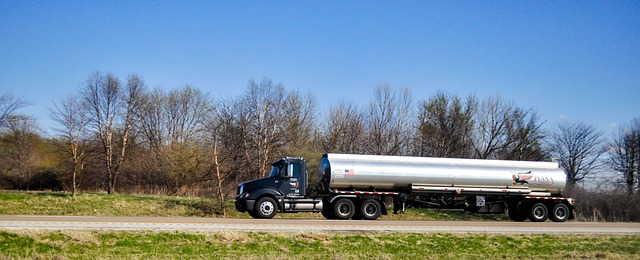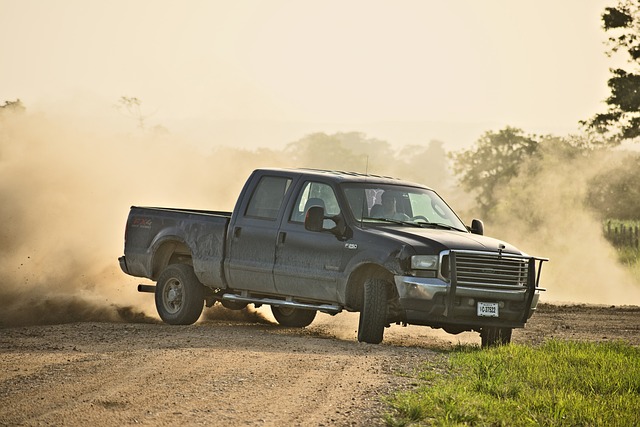When installing a new truck battery, it is essential to follow a systematic approach to ensure both safety and optimal performance. Begin by cleaning any corrosion from the battery tray and terminals to prevent electrical issues. The new battery should be installed level on a non-conductive surface, secured with a battery holder or strap, and aligned properly within the vehicle's battery compartment. Make sure to connect the positive (red) terminal first, then the negative (black) cable, ensuring all connections are tight but not overly so. After installation, perform a voltage check with a battery tester or multimeter to confirm that the battery has an adequate charge. If any electrical system issues arise after installation, troubleshoot by inspecting battery terminals and cables for wear or corrosion, and if necessary, examine the alternator and charging system to ensure they are functioning correctly. If the battery light remains on after starting the engine, seek professional help to diagnose and fix the issue. Remember to handle the battery with care as it contains acid which can be hazardous.
When it comes to maintaining your truck’s performance, ensuring a reliable power source is key. This guide will walk you through the essential steps for installing a new truck battery, from assessing your vehicle’s specific battery requirements to securing and testing your new unit. Whether you’re a DIY enthusiast or a professional, this article provides a comprehensive overview of the installation process, ensuring your truck stays powered for any journey ahead. Follow along as we cover everything from gathering the necessary tools to troubleshooting common issues post-installation, making the replacement of your truck battery straightforward and hassle-free.
- Assessing Your Truck's Battery Requirements
- Preparing for the Installation Process
- Gathering Necessary Tools and Equipment
- Removing the Old Truck Battery Safely
- Inspecting the Battery Tray and Connections
- Positioning the New Truck Battery Correctly
- Securing the Battery in Place and Making Connections
- Testing the New Battery and Troubleshooting Common Issues
Assessing Your Truck's Battery Requirements

Before proceeding with the installation of a new truck battery, it’s crucial to assess your vehicle’s specific battery requirements. Understanding the right battery type and capacity for your truck is essential for both its performance and longevity. Consult your vehicle’s owner’s manual or the manufacturer’s specifications to determine the correct battery size, cold cranking amps (CCA), reserve capacity (RC), and appropriate terminals. The CCA rating, which indicates the battery’s ability to start the engine in cold conditions, should meet or exceed the recommended specification for your truck model. Additionally, the reserve capacity, which measures how long the battery can maintain essential functions at 25 amps without being fully charged, should also align with the manufacturer’s guidelines. Selecting a battery with the correct ampere-hour (Ah) rating and physical dimensions ensures a proper fit within your truck’s battery compartment, avoiding any operational issues or damage to the vehicle. It’s also advisable to consider the battery’s reserve capacity to ensure it can handle the demands of your truck, particularly if you frequently use accessories like power inverters, winches, or other heavy-duty electrical systems. By carefully evaluating your truck’s battery needs and selecting a compatible replacement, you lay the groundwork for a successful installation and a reliable power source for your vehicle.
Preparing for the Installation Process

Before physically installing your new truck battery, it’s crucial to take a few preparatory steps to ensure a safe and effective process. Begin by gathering all necessary tools and equipment, which typically include a socket set, wrench set, pliers, battery terminal cleaner, and protective gear like gloves and safety glasses. Ensure you have the correct size of batteries for your specific make and model of truck; consult your vehicle’s manual or the battery manufacturer’s specifications to confirm compatibility.
Once you have the right equipment and battery, proceed to a safe working area, preferably with a level surface away from direct sunlight or extreme temperatures. Park your truck on a flat surface, engage the parking brake, and turn off the vehicle to prevent any electrical shorts or accidents during the installation process. Remove the old battery by disconnecting the negative (-) terminal first, using a wrench to loosen the nut securing the cable to the battery post. Clean the terminals with a battery terminal cleaner to ensure good connections for the new battery. Carefully lift out the old battery and position the new one securely in its place, making sure it’s properly seated on any supports or hold-downs designed for the battery. Reattach the cables, starting with the positive (+) terminal by securing the nut onto the post and tightening it with a wrench. Connect the negative (-) cable last to minimize the risk of electrical shock. Finally, check all connections are tight and that there is no corrosion on the terminals. With the battery in place and properly connected, start your truck to verify that the new battery holds a charge and functions correctly. Always refer to your vehicle’s service manual for specific installation procedures, as variations may exist based on the year, make, and model of your truck.
Gathering Necessary Tools and Equipment

When installing a new truck battery, having the right tools and equipment on hand is crucial for ensuring a smooth and efficient process. Begin by gathering the necessary items that will facilitate your work and guarantee safety throughout the installation. A reliable set of wrenches or socket sets is essential to remove and replace the battery terminals and mounting bolts without stripping any fasteners. Additionally, pliers can be useful for securing cable ends, while a circuit tester is important to confirm that there is no electrical charge in the old battery before removal, preventing any risk of electric shock.
Safety glasses or goggles are highly recommended to protect your eyes from any acid leaks or metal shavings that may arise during the process. A battery terminal cleaning brush or a wire brush will help you clean the terminals on both the battery and the vehicle’s chassis for a good electrical connection. Other tools that might be necessary include a hydrometer or multimeter to test the state of charge of the old battery, ensuring it’s not beyond recovery if it’s being reinstalled after maintenance. A strong, clean cloth or shop rags will also come in handy to clean any corrosion from the terminals and surrounding area. Lastly, have an appropriate tray or container ready to safely dispose of the old battery once removed. With all these tools and equipment at your disposal, you’re well-prepared to embark on the installation process of your truck’s new battery.
Removing the Old Truck Battery Safely

When addressing the installation of a new truck battery, safety is paramount throughout the process, particularly during the removal of the old battery. Before commencing, ensure that you have the appropriate personal protective equipment (PPE) such as gloves and safety glasses to protect yourself from any hazardous materials. Begin by safely securing the truck and ensuring it is parked on a level, dry surface to prevent any accidental rolling during the process. Locate the old battery in the vehicle’s engine compartment and take note of its connection points: these are where the positive (red) and negative (black) cables connect to the battery terminals. Disconnect the negative cable first, unscrewing the nut that holds it in place, to deactivate the electrical system and reduce the risk of electrical shorts or shocks. Once the negative cable is removed, proceed to disconnect the positive cable using similar care to avoid any electrical hazards. After both cables are safely disconnected, the battery is no longer connected to the truck’s electrical system and can be removed. Carefully lift the battery out of its tray, noting that it may be heavy and require assistance. Prepare the area where the new battery will be installed by cleaning any corrosion or buildup from the terminals and their connections before positioning the new truck battery in place, ensuring it is securely fastened to prevent movement during operation. Always adhere to your truck’s manufacturer guidelines and safety precautions when handling batteries to ensure a successful replacement with minimal risk of harm or damage to the vehicle.
Inspecting the Battery Tray and Connections

Before installing a new truck battery, it’s crucial to inspect the battery tray and connections to ensure a secure and efficient setup. Begin by examining the battery tray for any signs of corrosion or damage. The tray should be stable and capable of supporting the battery without any risk of warping or excessive movement. If you notice any corrosion on the tray, clean it thoroughly with a wire brush to remove any debris, as this can cause electrical connections to be erratic. Once the tray is clean and in good condition, proceed to inspect the battery terminals and cables. The negative (-) terminal should connect to an undamaged part of the vehicle’s frame, ensuring a solid ground connection. The positive (+) cable should attach firmly to the battery post without any signs of wear or fraying. Ensure that all connections are tight; use a wrench to secure them if necessary. Applying a protective coating like dielectric grease on the terminals after cleaning and connecting can help prevent corrosion in the future, thus maintaining optimal electrical performance for your truck battery. This attention to detail during installation will contribute significantly to the longevity and reliability of your vehicle’s electrical system.
Positioning the New Truck Battery Correctly

When installing a new truck battery, proper positioning is paramount for both safety and optimal performance. Begin by safely removing your old truck battery. Make sure to disconnect the negative (-) cable first, followed by the positive (+) cable, to prevent any electrical shorts or accidents when handling the cables later. Once the old battery is removed, clean the terminals and mounting area thoroughly. This ensures a good connection and prevents corrosion, which can degrade battery performance over time.
Position your new truck battery securely in its designated spot. Typically, it should be placed in a well-ventilated area within the truck’s chassis to prevent overheating, as heat can significantly reduce battery life. Ensure that the battery is mounted on a non-conductive surface and that it’s held in place with a strong, flexible battery holder or strap. The battery must be level; uneven positioning can lead to uneven electrolyte levels and reduced battery capacity. Connect the cables from your truck’s electrical system to the new battery, reattaching the negative (-) cable first, followed by the positive (+) cable. Tighten the connections firmly but do not overtighten, as this can damage the terminals. Lastly, double-check all connections for tightness and security, and verify that there are no leaks or signs of damage to the battery casing before starting your truck and confirming the installation is complete and successful.
Securing the Battery in Place and Making Connections

When installing a new truck battery, securing it in place is paramount to ensure both safety and functionality. Begin by cleaning the battery tray thoroughly with a wire brush to remove any corrosion or debris that could interfere with proper contact. Once the area is clean, position the battery in the tray, ensuring it’s aligned correctly so that it sits snugly without any excessive movement. Use the provided battery hold-down clamp or strap to fasten the battery securely. Tighten the clamp or strap according to the manufacturer’s specifications and the vehicle’s requirements to avoid any risk of the battery moving during operation, which could lead to poor performance or damage.
With the battery now firmly in place, the next step is to make the necessary connections. Start by connecting the positive (red) terminal first. Locate the positive terminal on both the battery and the truck’s electrical system, and connect them using a wrench to tighten the cable clamp securely. Ensure that the connection is clean, dry, and free of any corrosion to prevent electrical issues. Next, attach the negative (black) cable. This involves connecting the negative terminal on the battery to the appropriate grounding point in your truck’s chassis or frame. Again, ensure a firm and secure connection by tightening the clamp with a wrench. After making these connections, double-check all cables for any signs of overtightening, which could damage the cables or battery terminals, or any loose connections that could cause poor electrical contact. Properly installing your truck battery involves careful attention to both security and connectivity to maintain optimal vehicle performance.
Testing the New Battery and Troubleshooting Common Issues

Prior to securing the new truck battery in place, it’s crucial to test it and ensure it holds a proper charge. This step is vital for both safety and functionality. Utilize a battery tester or a multimeter to check the voltage of the battery when it’s fully charged. Typically, a new truck battery should read around 12.6 volts. If the reading falls below this range, the battery may be defective, and it’s advisable not to proceed with installation without further inspection or replacement. Once confirmed good, carefully install the battery in your truck, ensuring that it’s properly aligned with the battery tray and securely fastened. After installation, retest the battery to confirm that it maintains its charge, as some batteries may discharge slightly during installation.
In the event that your truck’s electrical system isn’t functioning as expected after installing the new battery, troubleshoot common issues by checking connections and terminals first. Loose or corroded battery terminals can cause poor conductivity, leading to a vehicle that doesn’t start or exhibits erratic behavior. Inspect all cables, clamps, and terminals for signs of wear or oxidation. If the battery is correctly charged but the vehicle still fails to start, examine the alternator and charging system to ensure they are functioning properly. A faulty alternator can drain the battery over time, leading to a situation where the truck won’t start despite a newly installed battery. Additionally, if the battery light on the dashboard remains illuminated after startup, there may be an issue with the battery itself or the charging system that requires immediate attention and possibly further diagnostics with a scan tool or by consulting the vehicle’s service manual for specific troubleshooting steps.
When addressing a truck’s battery needs, careful consideration of your vehicle’s specifications is paramount. Following this guide, from assessing requirements to ensuring the installation of your new truck battery is executed with precision and safety, you can confidently maintain your truck’s electrical functionality. By preparing adequately, gathering essential tools, and methodically replacing the battery with attention to detail in the tray inspection and connection steps, your truck will be equipped with a reliable power source. Remember to test the new setup and address any issues promptly to ensure optimal performance. With these steps, you’ve successfully upgraded your truck battery, ensuring your journey ahead is supported by dependable energy.



